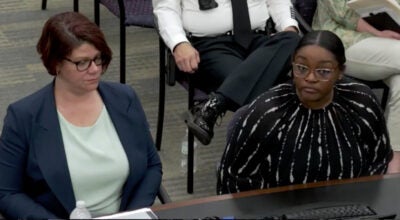Ask Us: How are traffic light times determined?
Published 12:10 am Monday, March 2, 2015
Question: How is the length of time for a traffic light determined? There are some intersections at which it seems to be exceptionally (and unnecessarily) long. Every time I get caught at one of those, I wonder what goes into the decision on timing.
Karen South Jones
Answer: Timing of traffic lights, at least in the City of Salisbury, is partially based on the volume of traffic at a particular intersection, said city engineer Wendy Brindle.
“Certain streets get longer times based on peak hour volumes,” Brindle said. “We analyze it through special software and what it recommends for the time. We do have upper limits, which, in Salisbury, we try to limit to 120 seconds.”
Seconds, she said, are measured by the time it would take for a person sitting at a red light, who stays stationary, to see the light turn red again. She mentioned East Innes Street and Arlington Street as an example of an intersection close to the upper time limit.
“We do try to limit our cycle length so a person sitting at a signal doesn’t feel like they’re waiting forever,” Brindle said.
Some traffic signals on the same street and within close proximity to each other are coordinated, which means the stoplights change at about the same time. Others, such as the intersection of Jake Alexander Boulevard and Julian Road, run on free time, meaning they aren’t coordinated with any other stoplights, Brindle said.
Brindle used the terms “fully-actuated” and “semi-actuated” to describe two other ways the city controls stoplights. For a “fully-actuated” intersection, Brindle said sensors, or loops, at a four-way stop would sit at each of the intersection’s four parts. For semi-actuated streets, the same sensors would only be located on side streets, meaning the light wouldn’t change unless a car was waiting on a side street.
Brindle encouraged any drivers with feedback about stop lights to call the City of Salisbury at 704-638-5200. She said the re-timing of some stoplights within the city limits will take place this summer.
“We appreciate the input because it lets us know where we are having problems,” she said.
Got a question for the Salisbury Post? Email it to askus@salisburypost.com.



